The world of mountain bike technology is an ever-changing one, with new standards and more flashy tech popping up every year.
But what are the biggest innovations that have changed mountain biking since its inception? We’ve taken a dive into the history books and pulled out 11 mountain bike game-changers.
These show just how far mountain biking has come, but also signal what the future of off-road riding might look like.
This list is by no means comprehensive – it's just a small selection of the developments we think are the most important. Let us know what you think in the comments below.
1. Purpose-built mountain bikes
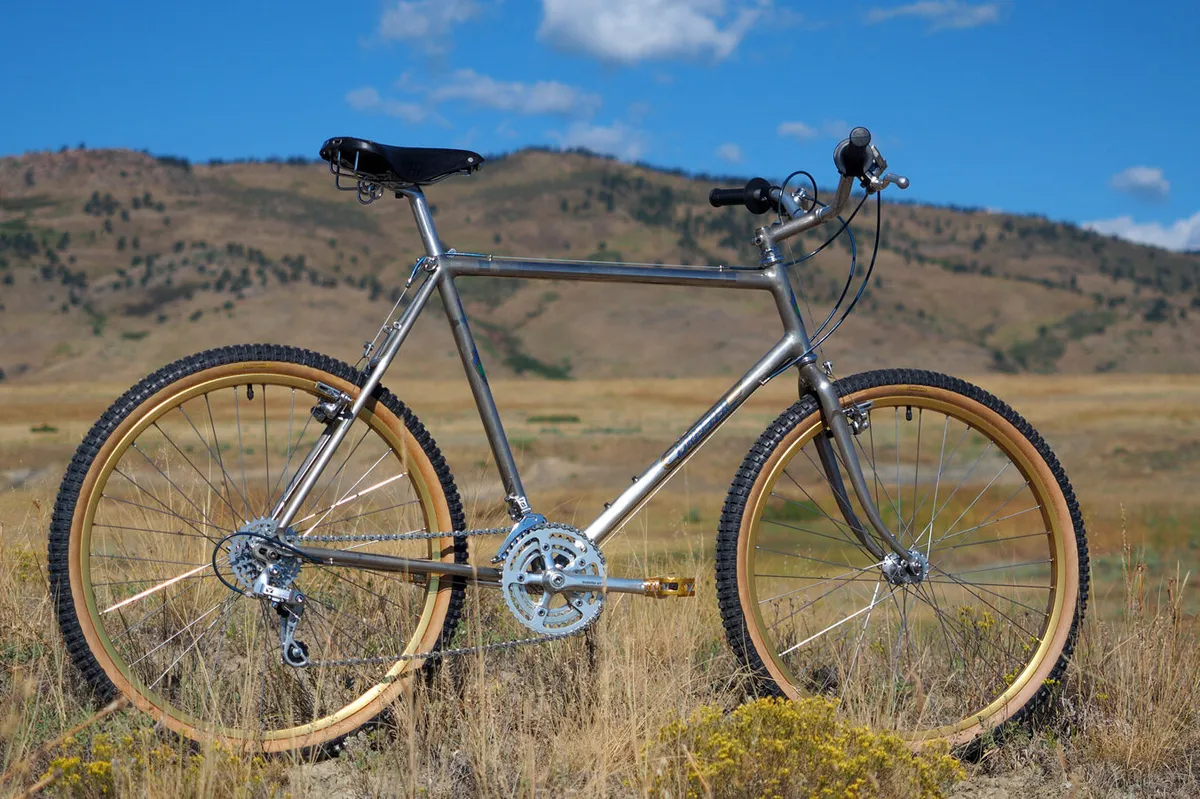
To start this list, we have to go right back to the very beginnings of the sport.
In 1977, California-based rider and racer Joe Breeze created the first purpose-built mountain bike. At the time, trail lovers had to make do with repurposed bikes called 'clunkers', which had a tough life holding up to the abuse of off-road riding.
Joe’s first run of Breezer Series 1 frames were snapped up by the local Californian riding scene. Built up with the latest 3x6 drivetrains and adapted Magura motorcycle brakes, they left any other bike in their dust.
In the years that followed, the Breezer Series 1 became the benchmark for anyone looking to design a purpose-built mountain bike. The Breezer Series 3 is a thing of beauty, too, with fillet-brazed chromoly tubing and nickel plating.
Just four years later, in 1981, the first mass-market mountain bike was unveiled. The Specialized Stumpjumper brought mountain biking to the mainstream and meant anyone, not just those who could buy custom frames, could try their hand at off-road riding on a mountain bike.
2. Suspension
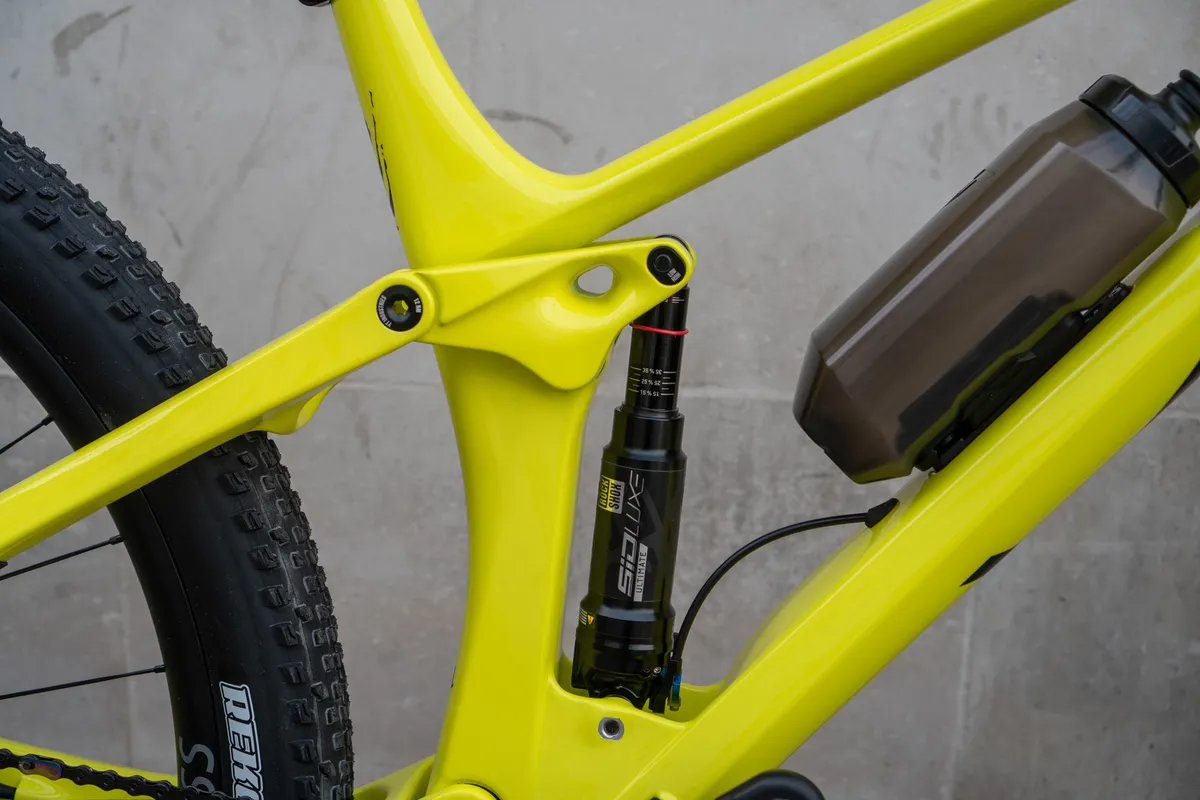
In 1985, Horst Leitner changed mountain bike history with his first prototype Horst-link bike.
Coming from a background in motorcycle engineering, the American wanted to create a mountain bike suspension design that would enable him to reduce the effect of braking forces (anti-rise) on the suspension’s sensitivity.
His Horst-link design (also known as a four-bar link) became one of the most widely used linkage designs on the market, used to this day by the likes of Specialized, Norco, Transition and many more.
In 1991, RockShox released its first suspension fork, called the RS-1. Offering roughly 50mm of travel, the fork had 25.4mm (1-inch) thick stanchions and a spindly brace – stiffness was not the chief concern at the time.
The RockShox suspension fork also lacked adjustable rebound and compression damping. However, despite these flaws, it changed the game and its telescopic design is still mirrored by the best suspension forks on the market today.
3. Dropper posts
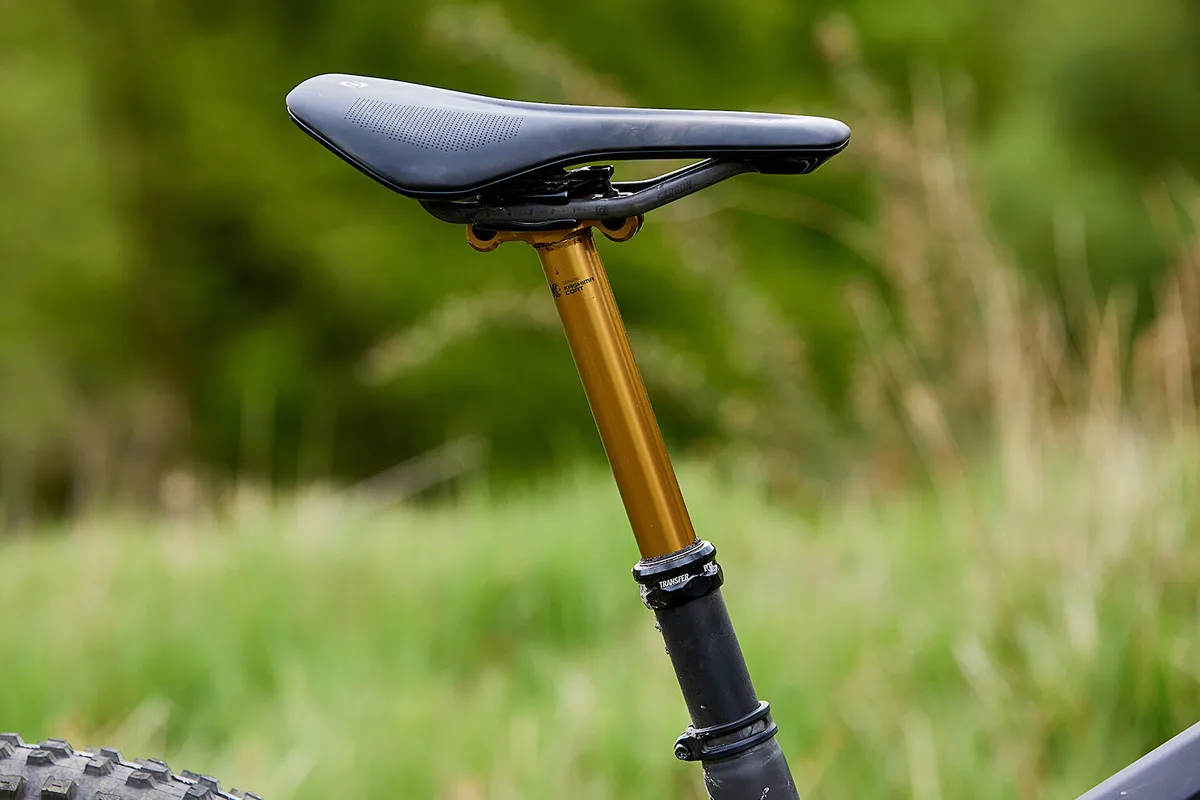
By the mid-1980s, mountain bike innovation had truly taken off, with full-suspension frames and telescopic forks opening the door to a whole new world of trail riding. But, one problem remained – you had to stop every time you wanted to lower your seatpost for a technical descent.
In 1984, Josh Angell and Joe Breeze (the brain behind the Breezer Series 1) came up with a solution called the Hite Rite.
The Hite Rite relied on a simple spring mechanism, which was attached by two collars to the bike’s seat tube and the seatpost.
To drop the saddle, the rider simply had to reach down to unlock the quick-release collar on the seat tube and the seatpost would lower, loading the spring. The collar could then be locked off for descending.
To raise the saddle, the rider simply had to unweight the seat and unlock the quick-release. The loaded spring would then return the seatpost to its original high position. Three models were available, offering up to 114mm of drop.
In 1998, Kind Shock (commonly known as KS) released what it claimed to be the first real dropper post. Inspired by the height-adjustment system found on office chairs, the KS ur-dropper relied on an air spring to hold the rider's weight at maximum extension. A small lever at the seat clamp enabled the telescopic shaft to drop, where it then automatically locked at its lowest position.
In 2010, the game changed again with the introduction of the first RockShox Reverb. Using a fully sealed hydraulic system and handlebar-mounted remote, the Reverb boasted 125mm of infinitely adjustable travel and paved the way for the next generation of dropper posts.
4. Disc brakes
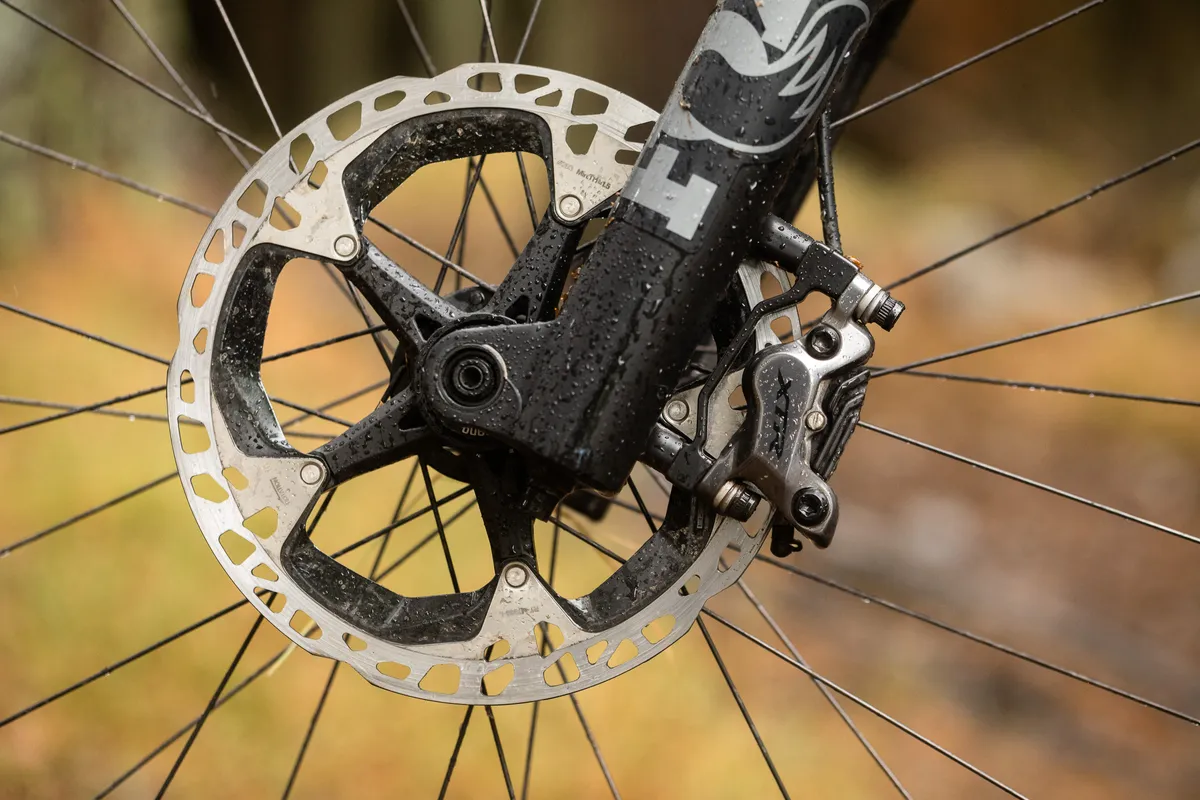
In the early days of mountain biking, riding speeds kept increasing year by year with the help of new frame designs, suspension technology and dropper posts.
Mountain bike brake technology had a hard time keeping up. Though mechanical disc brakes were around as early as the 1970s, the cantilever rim brake (and its many variants, including V-brakes) remained dominant until the early 2000s.
The first hydraulic disc brakes started popping up around 1980, but didn't become mainstream until the mid-90s.
In 1996, the UK’s Hope Technology went global with the launch of its Hope C2 design. These new hydraulic disc brakes had a thumbwheel adjuster, enabling riders to change brake feel on the fly. Hayes followed with its Mag brakes in 1997. Formula was also hugely influential in the late 90s, sponsoring Nico Vouilloz at the height of his career.
The release of Shimano's XT M755 disc brakes in 1999 represented a watershed moment when disc brakes began to take over en masse.
Disc brakes have also proved a game changer for road cycling, but road riders were a lot slower to adopt the technology than their fellow mountain bikers – and some still favour rim brakes.
5. 29ers
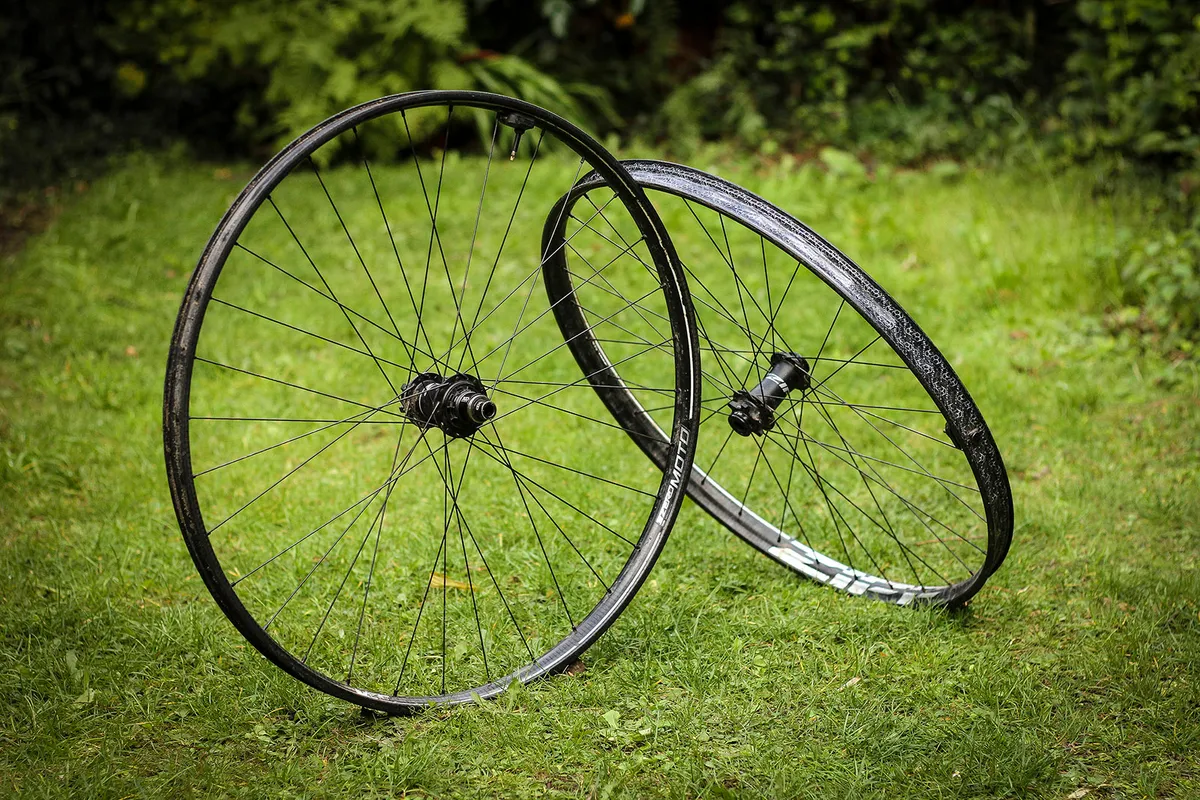
29ers have been around since the beginning of the sport. Sharing the same rim diameter as 700c road wheels, they have been used experimentally since the early days of mountain bike design.
Due to a lack of quality affordable tyres, the bigger wheels never really got rolling, and 26in was the only mainstream wheel size on the MTB market until Wilderness Trail Bikes (WTB) released the first purpose-made 29in mountain bike tyre in 1999.
The benefits of 29in wheels were hard to deny, offering better grip and rollover characteristics than the industry standard of 26in. However, frame geometry and suspension fork technology limited the use of the big wheels to cross-country mountain bikes and short-travel bikes.
Early successful 29ers, such as the Trek 69er (which actually used a 26in rear wheel), were influential but failed to have mass appeal.
In 2013, a compromise had been found in the form of the 27.5in wheel size (also known as 650b). Offering increased grip, rollover and stability over 26in wheels without the handling downsides found on early 29ers, 650b quickly became the standard for mountain bike wheels.
However, 29er development continued in the shadows of the 650b hype. By 2016, the intermediate wheel size looked to have a fight on its hands, with more and more capable 29ers, such as the Trek Remedy 29, popping up on the trail and enduro market.
The beginning of the end of 650b’s hold on the gravity scene came just a year later when the Santa Cruz Syndicate announced they would be starting the 2017 Downhill World Cup onboard a 29in V10 prototype.
Though 27.5in bikes are still available, and have undergone something of a renaissance with the arrival of mullet bikes (more on them below), for performance-focused riding, 29ers generally reign supreme.
6. Tubeless tyres

Punctures are one of the most common (and annoying) mechanicals that can happen to you out on the trails.
There’s nothing more soul-destroying than hearing the dreaded psssss as your tyre rapidly loses pressure.
Luckily for us, with the advent of tubeless technology, ride-ending punctures have just about become a thing of the past.
The tubeless concept was born in 1999 when Mavic, Michelin and Hutchinson came together to pioneer what they hoped would become the universal standard for tubeless tyres, dubbed UST.
Despite proving successful in reducing punctures on the trail, the uptake of UST technology was slow. The system was heavy. In fact, it weighed more than readily available tubed tyre and wheel configurations and was much more expensive. It also wasn’t truly universal, requiring specific tyres and rims for a successful tubeless seal.
In the year 2000, a man by the name of Stan Koziatek shocked the industry with his homemade solution to the tubeless problem. Using a standard tyre and rim combination, Stan taped the rim bed and added a home-brewed tyre sealant solution before mounting the tyre.
His system was effective, cheap and truly universal, and soon wheel and tyre manufacturers from across the industry were flocking to use his findings in their own products. In 2001, Stan’s No Tubes was born.
7. 1x drivetrains
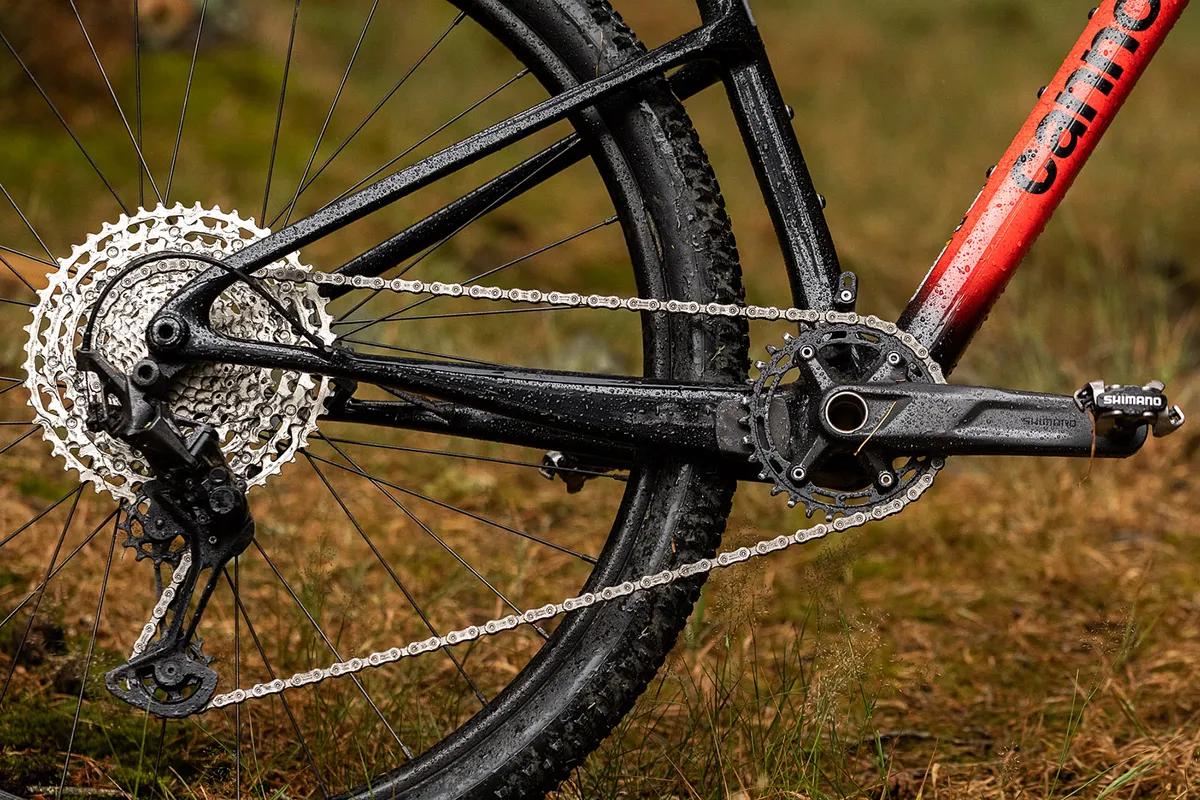
Since the introduction of the first dedicated 1x drivetrain by SRAM in 2012 (the 11-speed SRAM XX1), the mountain bike industry hasn’t looked back. Offering increased simplicity, reliability and chain retention over traditional 2x or 3x drivetrains, 1x drivetrains also save weight while reducing maintenance.
Another benefit of doing away with the front derailleur is the possibility of new frame designs. The space gained by the removal of derailleur mounts and large front chainrings has opened the door to technology such as high-pivot suspension linkages. It also enables manufacturers to shorten chainstays and widen rear axle standards without negatively affecting the frame’s chain line.
1x drivetrains also enable designers to broaden the main pivots and use larger bearings, improving stiffness and longevity.
8. Long and slack geometry
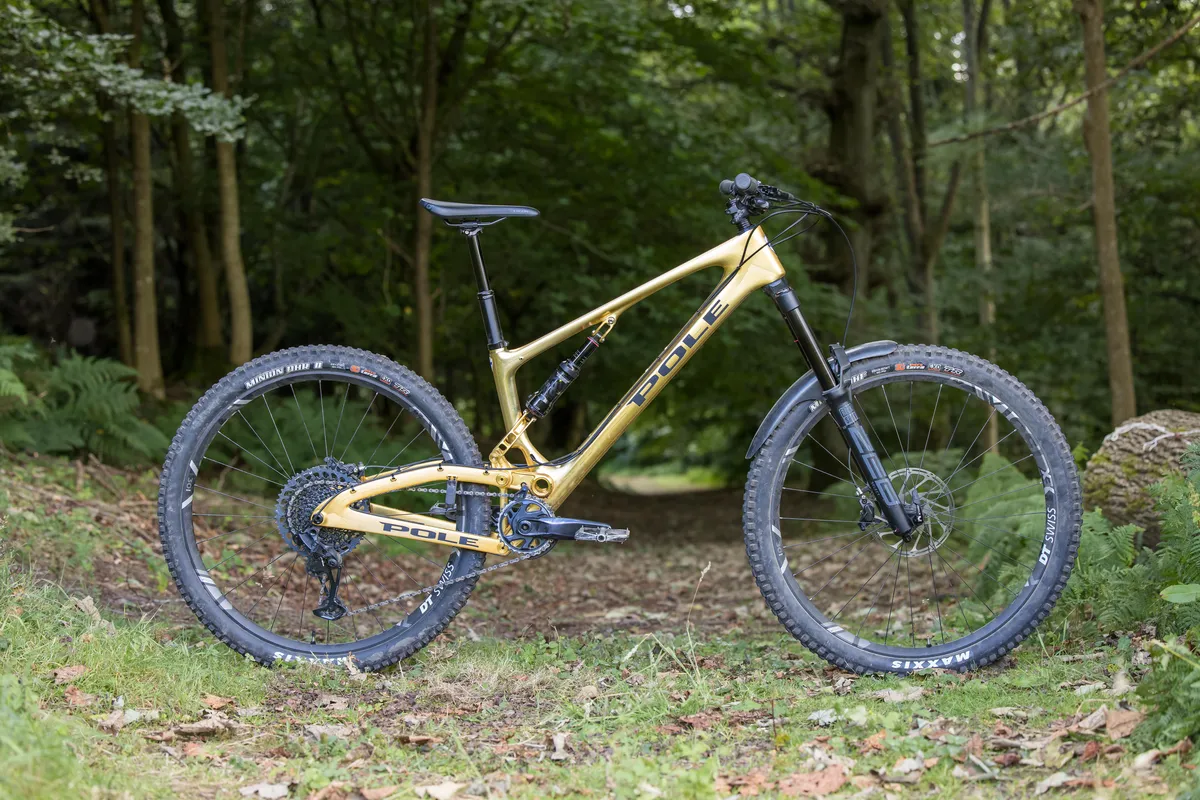
As riders have pushed themselves and their bikes onto more demanding terrain, MTB frame geometry has had to evolve with the sport.
Now, the words “long” and “slack” are almost a given when you hear a brand describing how it's updated a bike’s geometry.
One of the first brands to adopt the long and slack geometry ethos and boldly market it was Mondraker, coining the term “Forward Geometry” with its radical Centre Stem.
This trend saw head tube angles becoming slacker, increasing stability at high speeds and confidence on steep trails. Top tubes also grew, increasing the reach measurements and enabling manufacturers to spec short stems for stability at speed.
The long and slack trend was adopted across the industry with some brands, such as Geometron, pushing the limits of geometry into uncharted realms.
Some of the more experimental ventures into long and slack geometries were too extreme to perform on anything other than the steepest and fastest trails. But the overall shift towards more confidence-inspiring geometries has enabled the best modern mountain bikes to be more capable than ever before.
9. Electronic gears and suspension
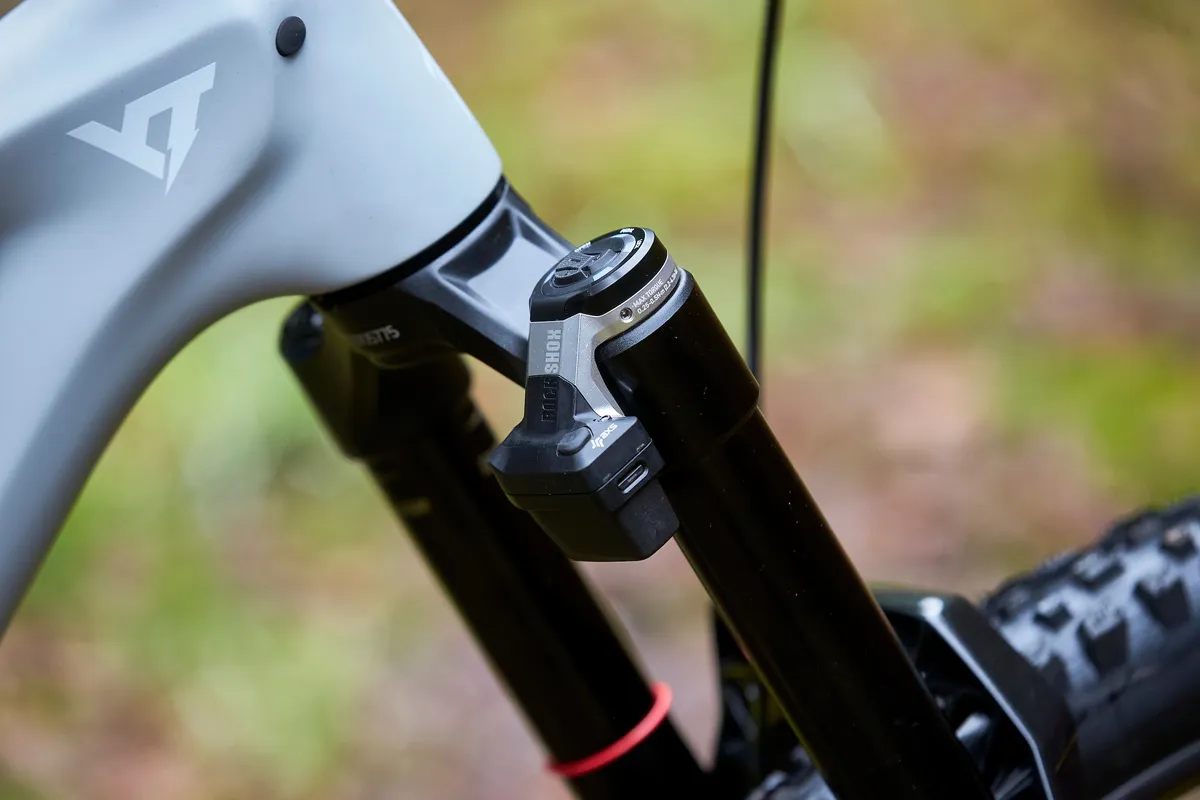
In recent years, electronic components have sprung onto the MTB scene.
Although Shimano paved the way with electronic drivetrains when the brand brought XTR M9050 Di2 to market back in 2014, SRAM changed the game in 2019 with the introduction of its 12-speed Eagle AXS drivetrain, offering entirely wireless shifting. The rest of the industry is still catching up.
SRAM shows no signs of slowing down, expanding the AXS ecosystem and bringing wireless suspension control to the mountain bike market in the form of its RockShox Flight Attendant technology. This automatically adjusts suspension damping to the terrain using sensors in the forks, shock and cranks. The system also enables you to adjust compression modes on the fly, using SRAM’s AXS shifters.
SRAM T-Type Eagle Transmission sees the brand up its electronic game even further. The design does away with limit screws and enables you to make micro-adjustments via an app.
Will we see more companies jumping on the wireless electric bandwagon? So far, we’ve seen measurable improvements in performance and usability thanks to electronic innovation, so we’re excited about what the future could hold.
10. Electric bikes
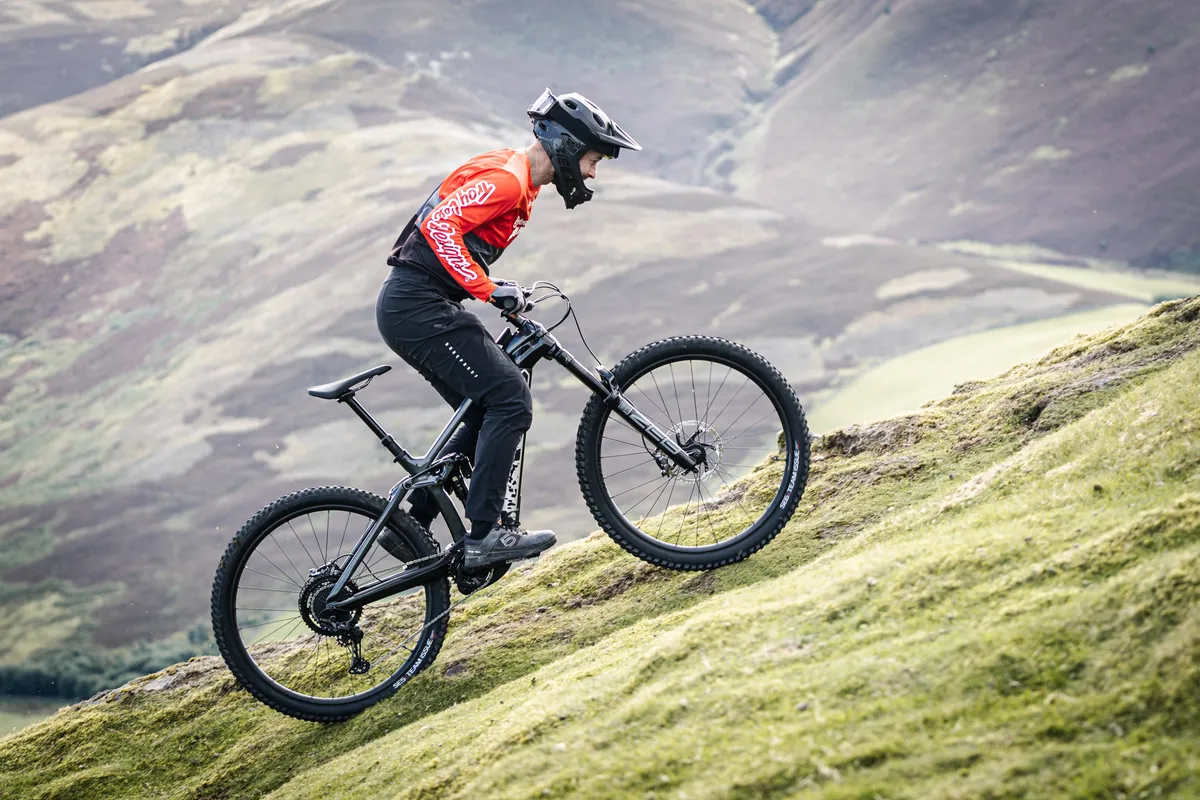
It would be impossible to list game-changing MTB innovations without mentioning electric mountain bikes.
Quickly becoming the fastest-growing sector in the industry, the best electric mountain bikes give their non-assisted counterparts a run for their money on even the most gnarly descents.
On the climbs, of course, they outperform even the lightest cross-country bike and provide bucket-loads of smiles whatever the gradient.
11. Carbon and alloy frames
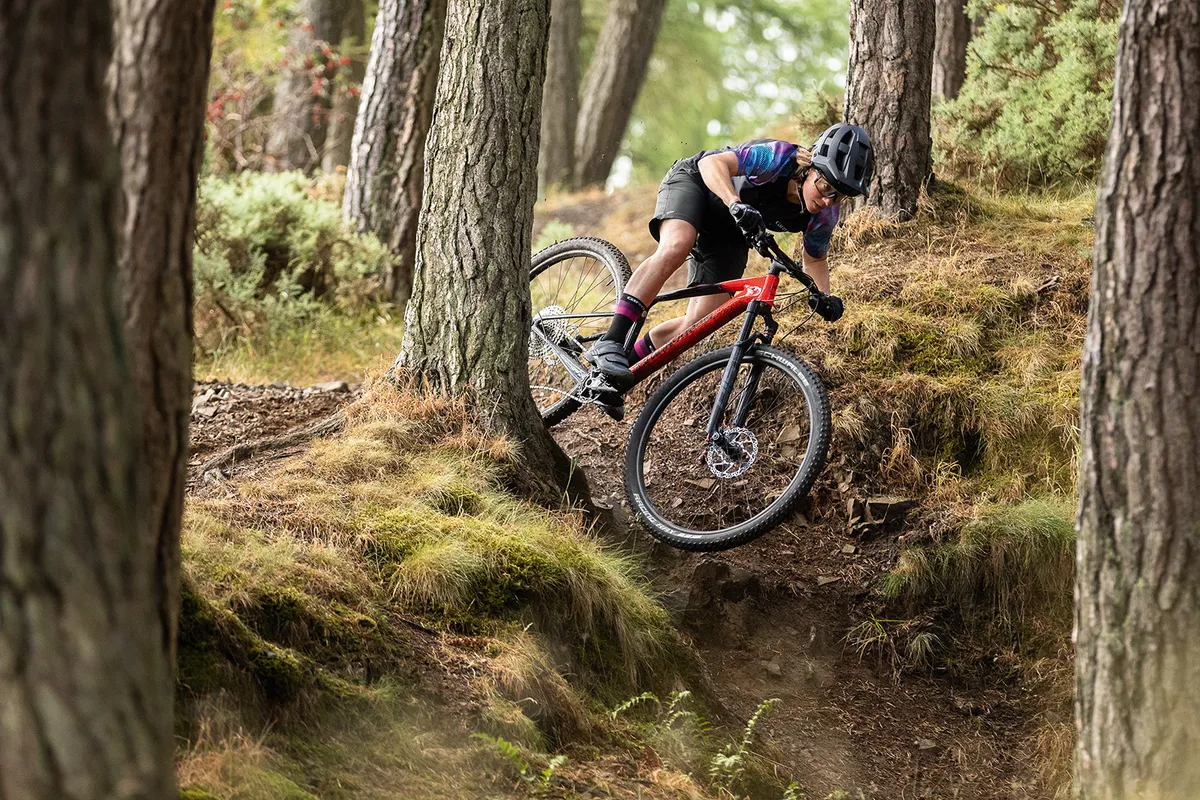
Early mountain bikes (well, all bikes if we’re being pedants) were made from steel.
While some still swear by the springy, damped ride quality and resilience of a steel frame, there’s no denying the introduction of alloy and, later, carbon frames has enabled engineers to push frame design into new realms.
Carbon and alloy offer designers the ability to create complex frame shapes that can accommodate new suspension designs without increasing weight or compromising on stiffness.
